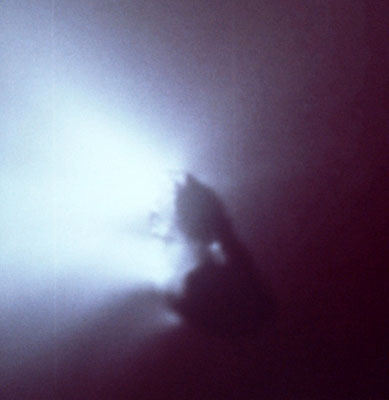The annual Eta Aquariids (or Eta Aquarids) meteor shower peaks on May 6, 2015. Sadly this year's event will be adversely impacted due to the presence of the nearby almost full Moon.
Parent Comet
The parent body for the Eta Aquariids shower is Halley's comet (1P/Halley). This isn't the only annual meteor shower associated with the famous comet; the stronger October Orionids also originate from Halley. Although Halley has now left the inner Solar System and won't return until 2061, it's worth remembering that all Eta Aquariids meteors are actually a small part of the famous comet burning up in the Earth's atmosphere!

Radiant
The radiant of the Eta Aquariids is located in northern part of the zodiac constellation of Aquarius, close to its border with Pegasus and Pisces. The radiant is positioned only 1 degree south of the Celestial Equator and therefore visible from practically all of Earth's surface, exception being the North Pole.
Despite it's global presence the Eta Aquariids meteor shower favours certain locations. The radiant is very well placed from equatorial latitudes, rising in the east after midnight and high in the sky before sunrise. From Southern Hemisphere latitudes it's also well seen but not so good from northern temperate locations. For example, from London, England (51.5N) the radiant rises just before dawn and therefore all but the brightest shooting stars are lost to the morning twilight.

Eta Aquariids Radiant and Star Chart - pdf format
What to expect in 2015?
Unfortunately the almost full waning gibbous Moon will certainly affect the 2015 shower. The resulting brightening of the sky will wash out many of the fainter meteors although hiding the Moon out of sight, behind a building for example, will help to some degree. The best time to look is from about 3am until dawn on the morning of May 6th.
Normally at ideal locations up to 55 meteors per hour could be expected. Of course with this year's event not being favourable the rate will be less but even then possibly up to 20 meteors per hour may be visible from equatorial or southern latitudes. The Eta Aquariids are fast moving meteors that are often bright with long persistent trains. Peak activity is not as narrow as other streams so it's also worth looking out on May 4th/5th and May 6th/7th.
Eta Aquariids Data Table
| Meteor shower name | Eta Aquariids |
|---|---|
| Meteor shower abbreviation | ETA |
| Radiant constellation | Aquarius |
| Activity | April 19th -> May 28th |
| Peak Date | May 6th (no sharp peak) |
| RA (J2000) | 22hr 32m |
| DEC (J2000) | -01d |
| Speed (km/s) | 66 |
| ZHR | 55 (can vary between 40 and 85) |
| Rating | Bright |
| Parent body | 1P/Halley |
| Notes | Unlike most major annual meteor showers, there is no sharp peak for this shower but rather a flat week of good rated centered on May 6th. |
Comet 1P/Halley Data Table (at epoch February 17th, 1994)
| Name | 1P/Halley |
|---|---|
| Type | Comet |
| Classification | Halley-type comet (NEO) |
| Discoverer | Prehistoric, Edmond Halley first recognised the periodicity |
| Discovery date | Prehistoric |
| Aphelion (AU) | 35.0823 |
| Perihelion (AU) | 0.58598 |
| Semi-major axis (AU) | 17.8341 |
| Eccentricity | 0.96714 |
| Orbital period (years) | 75.3175 |
| Inclination (degrees) | 162.263 |
| Longitude of ascending node (degrees) | 58.4201 |
| Last perihelion | February 9th, 1986 |
| Next perihelion | July 28th, 2061 |
| Notes | Halley's comet, the most famous of all comets |